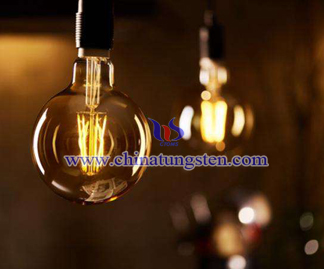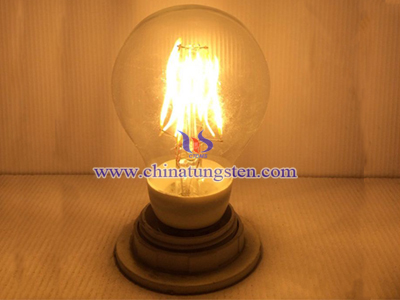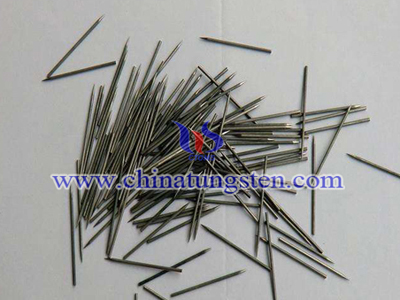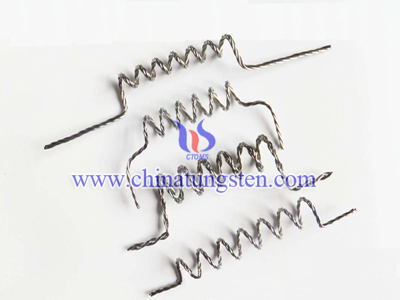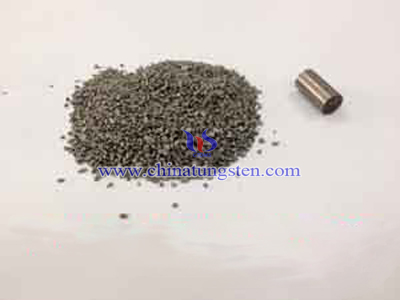Tungsten Filament in Vacuum Lamp
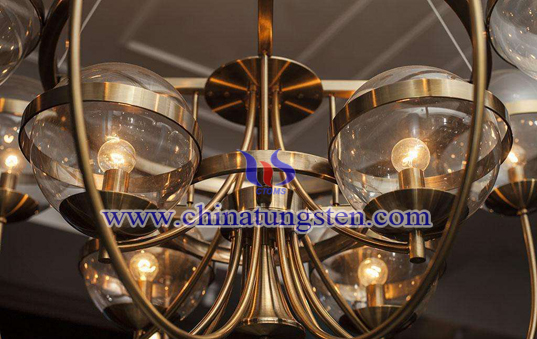
The tungsten filament of a vacuum incandescent lamp is heated to temperatures where visible light is emitted by resistance heating. The filament acts as an electrical resistor, which dissipates power proportional to the voltage applied, times the current through the filament. When that power level is sufficient to raise the temperature to above 1000 degrees Kelvin, visible light is produced. As the power dissipated is increased, the amount of light increases and the peak wavelength of the light shifts to the blue. Typical vacuum lamps may have filament temperatures ranging from 1800 to 2700 degrees Kelvin. The light from the low temperature lamps appears reddish yellow while the high temperature lamps have a whiter appearance.
The tungsten filament evaporates more rapidly as the temperature of the filament goes up. The evaporated tungsten particles tend to deposit on the glass envelope, causing over time, an increase in light absorption. Depending on the application, the light output obstruction could be high enough to end the useful life of the lamp. Eventually, the filament material will evaporate enough to cause the filament to break, completely ending the life of the lamp. Both of these effects are strongly dependent on the temperature of the filament, which is why long life vacuum lamps tend to be operated at the low end of the temperature range and the light has a yellowish appearance.
The electrical resistance of the tungsten filament at room temperature is initially quite low. When electrical power is first applied to the lamp, a large in-rush current will cause rapid heating of the filament. The resistance of the filament raises to a value five to ten times the cold resistance, which causes the amount of current drawn by the lamp to stabilize and the lamp to emit a stable light output. Depending on the size of the filament, the in-rush period can be from tens of milliseconds to hundreds of milliseconds. This in-rush current requirement should be taken into account in the selection of the power source for a specific lamp application.
In a word, tungsten filament can increase bulb’s lifespan, and vacuum environment can prevent tungsten filament from oxidizing, decrease tungsten filament thermal expansion, bright bulb’s brightness and reduce power consumption.

